Library and Archives
Bah Humbug!
The Christmas Stories of Charles Dickens.
To mark the festive season, we dip into the College Library’s collection of Christmas tales by Charles Dickens.
Many people will be familiar with A Christmas Carol, but fewer will know that Dickens’s well-loved tale was in fact one of several seasonal Christmas stories to have been published during the 1840s. Following the successful publication of A Christmas Carol in 1843, Dickens went on to write a series of seasonal pieces, which included The Chimes (1844); The Cricket on the Hearth: a fairy-tale of home (1845); The Battle of Life: a Love Story (1846); and The Haunted Man & The Ghost’s Bargain: a fancy for Christmas-Time (1848).
The industrial revolution in Britain had a significant impact on the increasing commercialisation of Christmas during the nineteenth century. Material objects could now be produced more quickly and more efficiently, and the mid-1840s, in particular, heralded an “explosion in Christmas publications and Christmas culture” (Moore, 10). Dickens’s Christmas books appeared on the market alongside other seasonal commodities, intended as small literary treats for the festive period.
Both the external and internal aesthetics of the Christmas books were very important to Dickens. All five volumes, printed in octavo, were beautifully-illustrated and bound in handsome crimson bindings, with blind and gold tooling and gilt edges. Such sumptuous books were not cheap to produce, however, and this was in turn reflected in the value of the volumes, which were to be sold at a price of five shillings each.
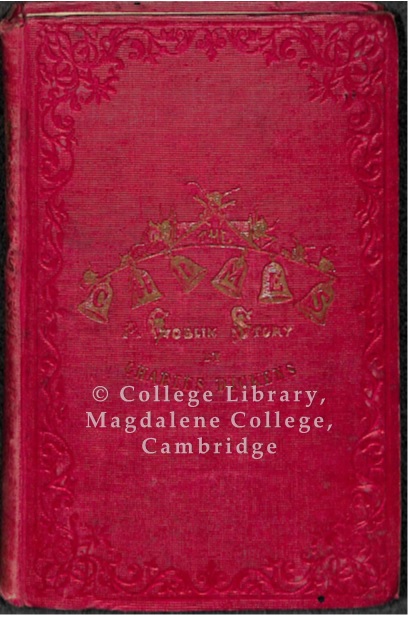
The books themselves were received with varying degrees of popularity – The Cricket was the most popular after A Christmas Carol but the remaining three stories attracted less recognition at the time.
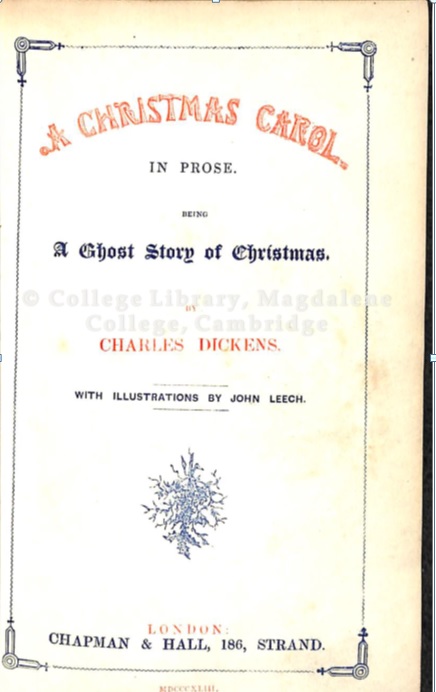
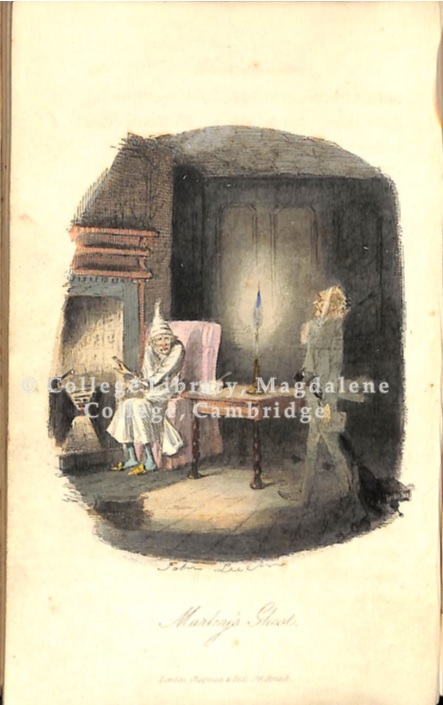
Interestingly, the College Library also holds a copy of The Faces in the Fire: a story for the season (1849), written by ‘Redgap’ [George Frederick Pardon, 1824-1884], and published in much the same style as Dickens’s Christmas books. Pardon was an English writer and journalist, who was engaged as an editor for, at various points during his life, publications including The People’s and Howitt’s Journal, Working Man’s Friend, Illustrated Exhibitor, and Home Companion.
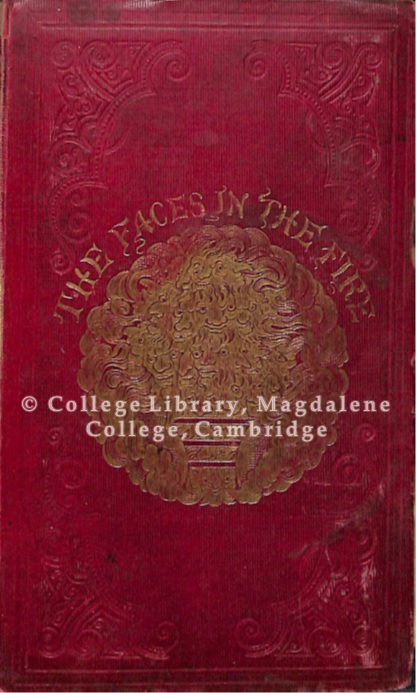
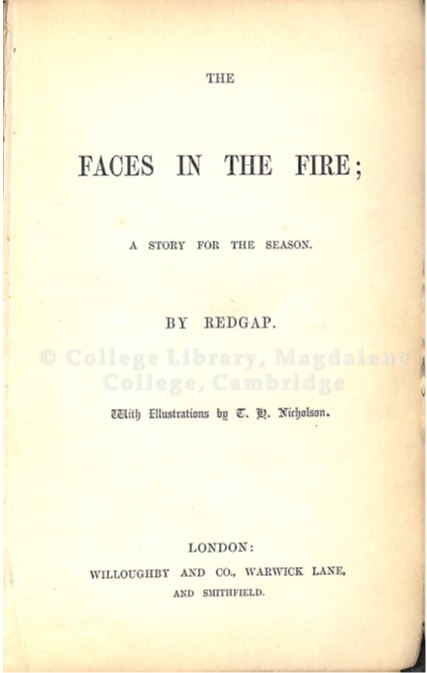
Bound in the same red rib-grain, gold-stamped cloth, with gilt edges and engravings, Pardon’s text seeks to visually imitate Dickens’s series of Christmas books and, in this way, satisfy what readers had by the late 1840s come to expect from their Christmas stories. The familiar design of the volume conforms to a particular material style of festive literature, while thematically, the narrative picks up on a common pattern of social, supernatural and domestic threads.
By Ellie Swire
Libraries Assistant